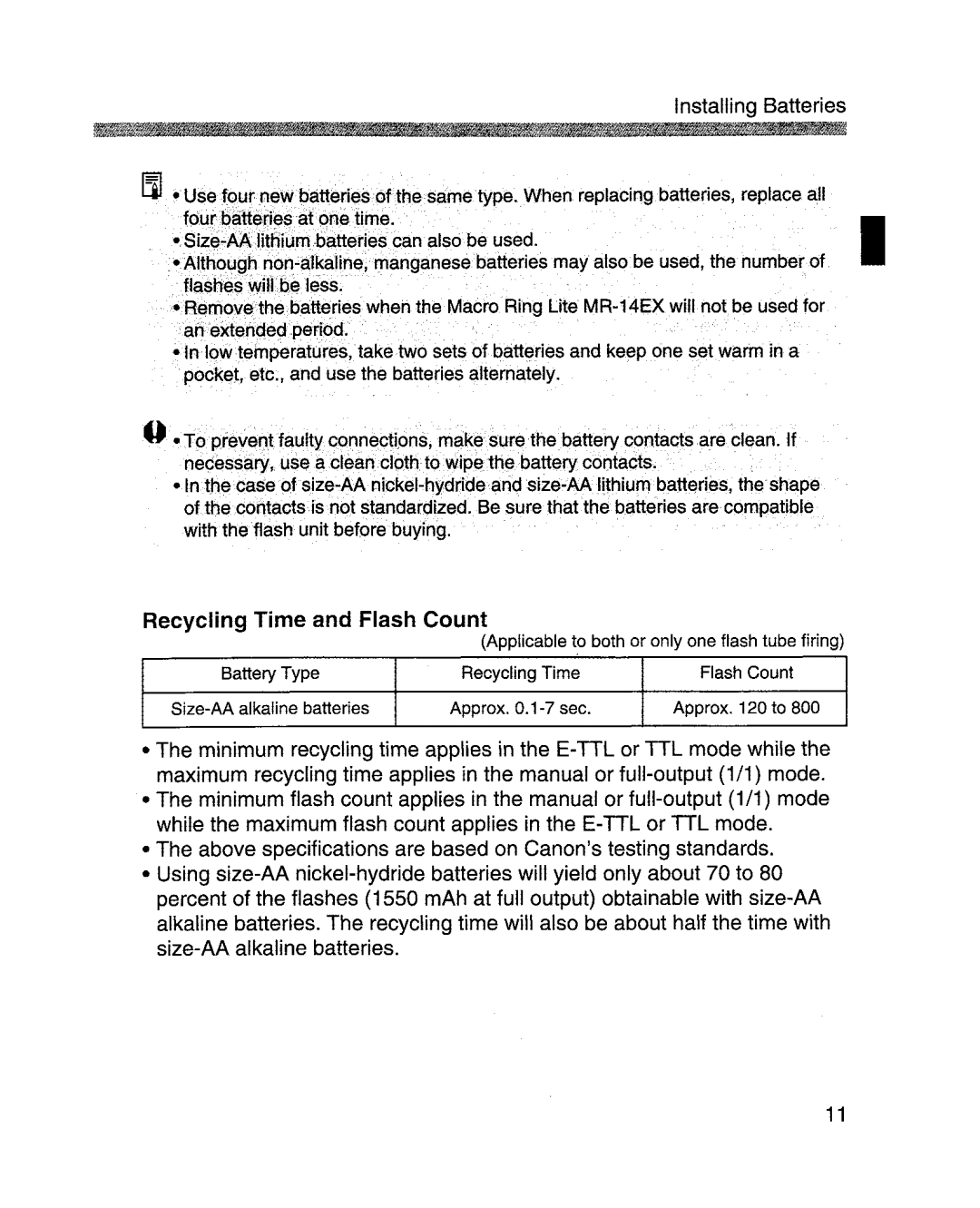
Inr;:,t<:lllinn Batteries | |
Ill.• usef8~rpewbatteri~softhesame type.. When replacing batteries, replace all | I |
fou.rb~tten~~at gne time. |
.SiZE)"AAJithiurnb~tteries c:an·also be used. | |
.-AltholJ9h 1l0n-aJkaline, manganese batteries may also be used, the number of | |
flashes Will be less. | |
• H~rrl0vethebatte.rieswheh the Macro Ring Lite MR-14EX will notbe used for | |
anextended.period. | |
-In low temperatures, take two set50f batteries and keepone setwarm in a pocket, etc:, and use the batteries alternately.
o. To preveQtfaultyconnections, make sure the battery contacts are clean. If
necessary, use a dean cloth to wipe the battery contacts, | . |
•In the case ofs.ize-AA•nickel-hydride and size-AA lithium batteries, the·shape of the contacts is not standardized. Be sure that the batteries are compatible with the flash unit before buying.
Recycling Time and Flash Count
| (Applicable to both or only one flash tube firing) |
Battery Type | Recycling Time | Flash Count |
Size-AA alkaline batteries | Approx. 0.1-7sec. | Approx. 120 to 800 |
•The minimum recycling time applies in the E-TTL or TTL mode while the maximum recycling time applies in the manual or full-output (1/1) mode.
•The minimum flash count applies in the manual or full-output (1/1) mode while the maximum flash count applies in the E-TIL or TIL mode.
•The above specifications are based on Canon'stesting standards.
•Using size-AA nickel-hydride batteries will yield only about 70 to 80 percent of the flashes (1550 mAh at full output) obtainable with size-AA alkaline batteries. The recycling time will also be about half the time with size-AA alkaline batteries.

